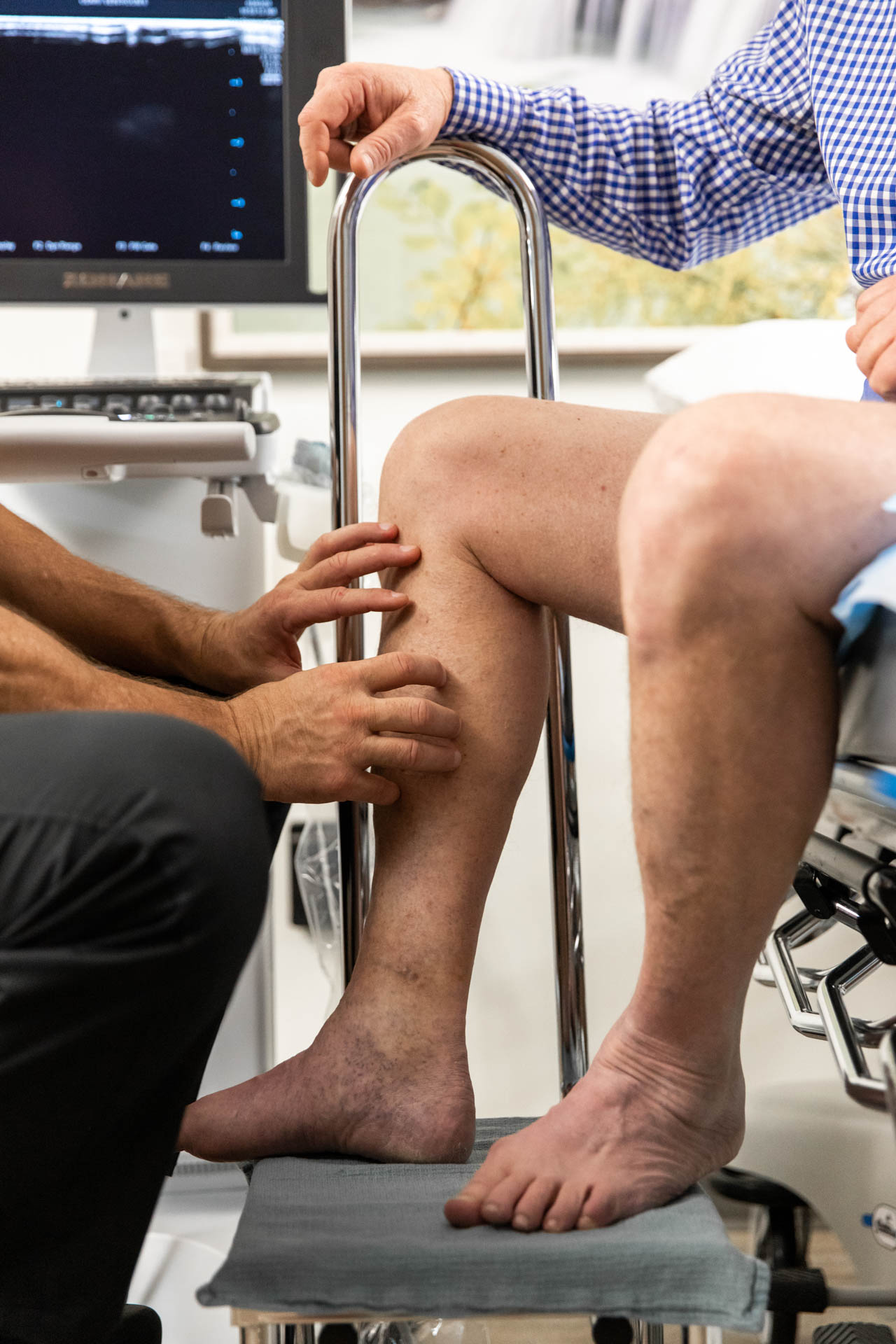Dealing with the complications of diabetes can, in many cases, make the feet vulnerable to skin sores (foot ulcers) that can worsen quickly.
These ulcers—open sores on the body—can be slow-healing and prone to infection. In some severe cases, ulcers can even lead to gangrene or claudication. As a result, many patients that require amputation or limb salvage support usually are dealing with physical complications from arterial disease and diabetes.
People with Diabetes Usually Struggle to Recover from Amputation.
Patients who are at risk for amputation usually face an uphill battle recovering. These issues limit their mobility, compound existing health concerns, and are likely to require a lengthy treatment/recovery time. Diabetics are in a particularly high-risk category when it comes to potential amputation.
Many either never physically recover or see their quality of life decrease to the point where they face additional health challenges. This process, sadly, often proves fatal. That’s why preventing foot ulcers is so important.
What You Need To Know
The good news is that proper diabetes management and careful foot care can help prevent foot ulcers.
Partnering with a Vascular Surgeon for Amputation Prevention in Rogers→
Higher Risk for Foot Ulcers
When foot ulcers do develop, it’s essential to get prompt care. A nonhealing ulcer that causes severe damage to tissues and bone may require surgical removal (amputation) of a toe, foot, or part of a leg. More than 80 percent of amputations begin with foot ulcers.
Some people with diabetes are more at risk than others. Factors that lead to an increased risk of amputation include:
- High blood sugar levels
- Smoking
- Nerve damage in the feet (peripheral neuropathy)
- Calluses or corns
- Foot deformities
- Poor blood circulation to the extremities (peripheral artery disease)
- A history of foot ulcers
- A past amputation
- Vision impairment
- Kidney disease
- High blood pressure
Here’s what you need to know to start your at-home foot health routine, including key signs that it’s time to see a doctor:
Preventing foot ulcers
Proper foot care will help prevent problems with your feet and ensure you know to seek out care if issues do start to appear. This includes:
Inspect your feet daily.
Check your feet daily for blisters, cuts, cracks, sores, redness, tenderness, or swelling. If you have trouble reaching your feet, use a hand mirror to see the bottoms of your feet.
Clean your feet.
Wash your feet in lukewarm (not hot) water once a day. Dry them gently, especially between the toes. Use a pumice stone to gently rub the skin where calluses easily form. You should also sprinkle talcum powder or cornstarch between your toes to keep the skin dry. Use a moisturizing cream or lotion on the tops and bottoms of your feet to keep the skin soft.
Don’t remove calluses or other foot lesions yourself.
To avoid injury to your skin, don’t use a nail file, nail clipper, or scissors on any calluses, corns, bunions, or warts. Don’t use chemical wart removers. See your doctor or foot specialist to remove any of these lesions.
Don’t go barefoot.
Don’t go barefoot, even around the house, to prevent injury to your feet.
Buy shoes that fit properly.
Buy comfortable shoes that provide support and cushioning for the foot’s heel, arch, and ball. Avoid tight-fitting shoes and high heels or narrow shoes that crowd your toes. If one foot is bigger than the other, buy shoes in the larger size. We also encourage looking into orthopedic shoes.
We also encourage you to wear clean, dry socks. This helps keep your feet clean and protected.
Schedule regular foot checkups.
Your doctor or podiatrist can inspect your feet for early signs of nerve damage, poor circulation, or other foot problems. Schedule foot exams at least once a year or more if your doctor recommends them.
Diabetic Arterial Disease Experts
If you require support treating foot ulcers or caring for arterial disease, come to the Ozark Regional Vein & Artery Center. Our experience and growing suite of care options enable us to guide you toward lasting wellness solutions for a happier, healthier life.
We are the premier practice in Northwest Arkansas for all the highest-quality vein treatments available. Patients come to Dr. Haney, Dr. Stout, and the expert staff from all over Northernwestern Arkansas, from Fayetteville to Bentonville, to ensure they receive the best concierge-level care and leg vein procedures.
Lead the charge on your vascular care with our Virtual Vein Screening Tool or by scheduling a consultation.

